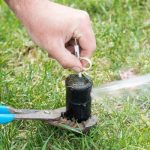Dotted gayfeather is commonly grown for fresh and dried flower arrangements, but it can be even more beautiful and beneficial in your garden.
Liven up your late-summer garden with dotted gayfeather: a stalwart, deer-resistant and drought-tolerant performer in well-drained soils!
Liatris punctata, or dotted gayfeather, is commonly grown as a cut flower for fresh and dried flower arrangements, but it can be even more beautiful and beneficial in your garden. However, this lesser-known perennial is hard to find in nurseries due to a perceived lack of interest.
This plant grows to about 3 feet in height and can be about 3 feet wide. One of Texas’ most attractive and drought-tolerant wildflowers, dotted gayfeather appears on the scene in late summer and fall and is extremely beneficial to imperiled pollinating insects, especially hungry monarch butterflies as they make their way to the Oyamel fir forests of Mexico for their winter slumber.
Liatris punctata is an enduring member of the grassland ecosystem that once existed here in Central Texas. It has an incredibly deep tap root system that makes its home amongst other species of grassland plants such as big bluestem, little bluestem, narrow-leaf coneflower, sideoats grama, goldenrod, Lindheimer’s muhly grass and other flowering forbs. This matrix of diverse root structures, when not disturbed, is highly effective at preventing erosion, a gardener’s worst nightmare. These root systems are also incredibly adept at acting as something of a sponge, encouraging groundwater recharge and reducing pollutant-laden storm water runoff.
Ask for the true native Liatris punctata at your local nursery in hopes that it will become a mainstay of central Texas gardens. Beware of the non-native, moisture-loving Liatris spicata that is commonly available at nurseries as it is not adapted to San Antonio’s unique soil mish mash and variable rainfall.
Try planting dotted gayfeather with warm season grasses, such as Indian grass and those mentioned above for a lovely display of fall color. One great way to enjoy this plant in your garden is to start them yourselves from seed. Avoid the urge to fertilize — it’s not necessary — and be careful not to overwater.
This plant is deciduous, meaning it loses its aboveground portion during the cooler months of the year, so take caution not to mistake its spring and summer growth for an uninvited weed!




